Dracula
9 /10 2 Votes
Country United Kingdom | Language English | |||||||||||||||||||||||||||||||||
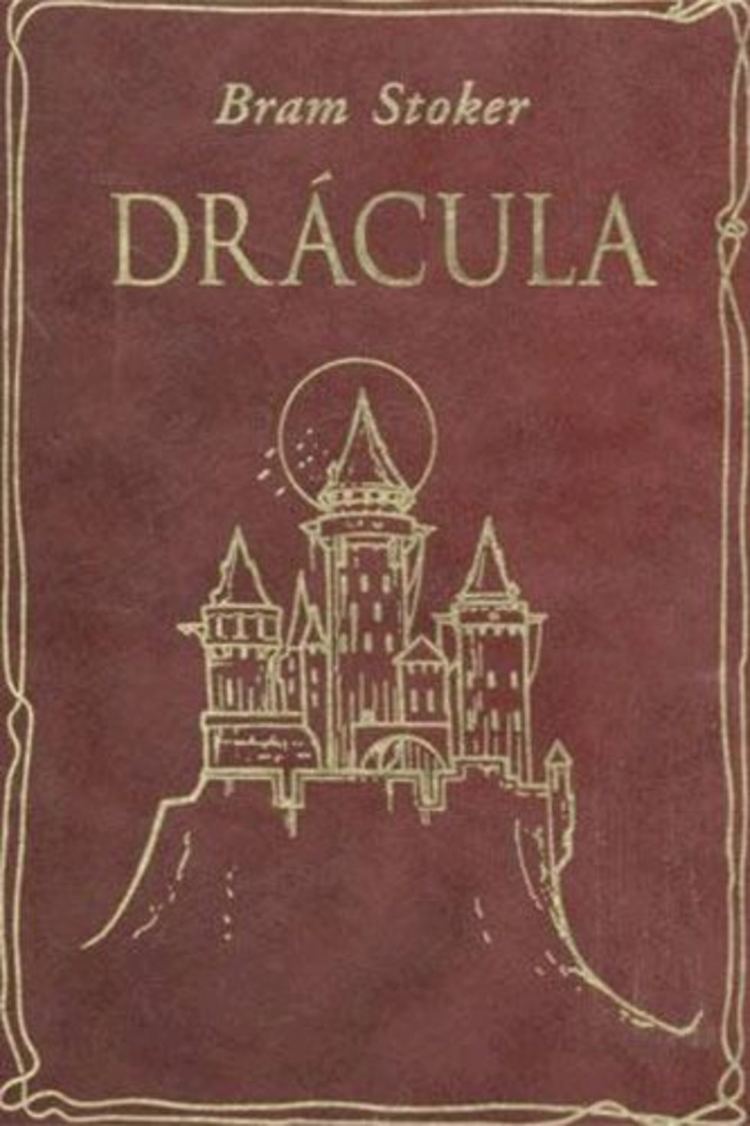 | ||||||||||||||||||||||||||||||||||
Bram Stokers Dracula - A Documentary (FULL DOCUMENTARY)
Dracula is an 1897 Gothic horror novel by Irish author Bram Stoker. It introduced Count Dracula, and established many conventions of subsequent vampire fantasy. The novel tells the story of Dracula's attempt to move from Transylvania to England so that he may find new blood and spread the undead curse, and of the battle between Dracula and a small group of men and a woman led by Professor Abraham Van Helsing.
Contents
- Bram Stokers Dracula A Documentary FULL DOCUMENTARY
- Plot summary
- Draculas Guest
- Deleted ending
- Characters
- Background
- Publication
- Reaction and scholarly criticism
- Scholarly criticism
- Adaptations
- References
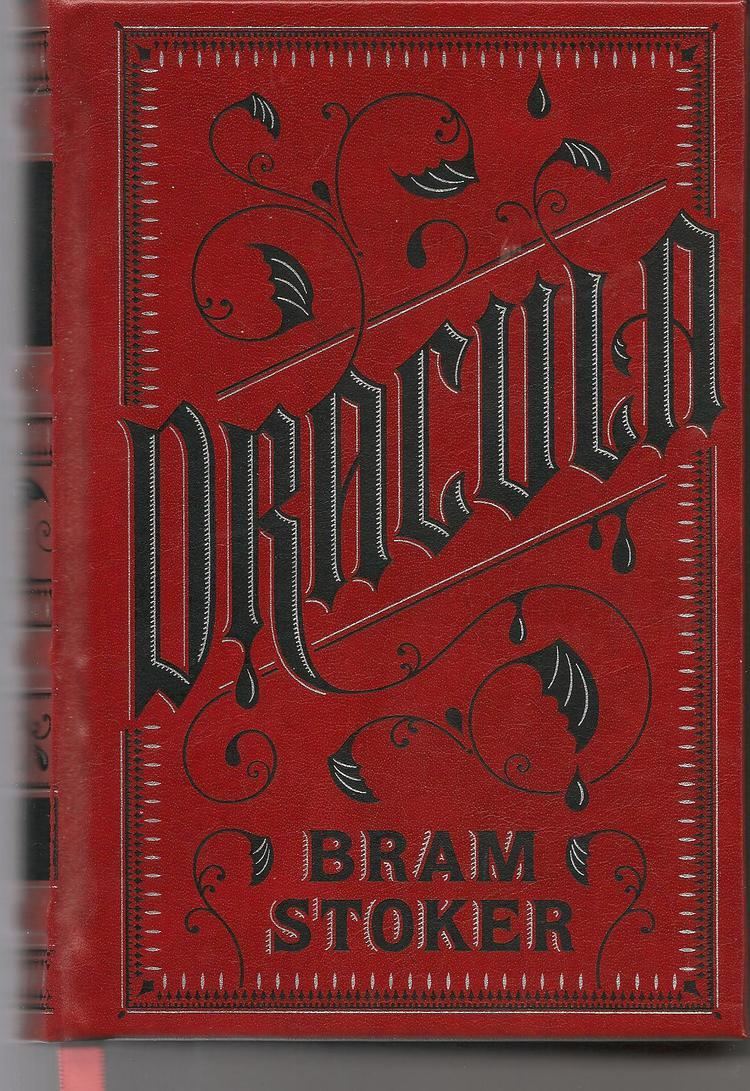
Dracula has been assigned to many literary genres including vampire literature, horror fiction, the gothic novel, and invasion literature. The novel has spawned numerous theatrical, film, and television interpretations.
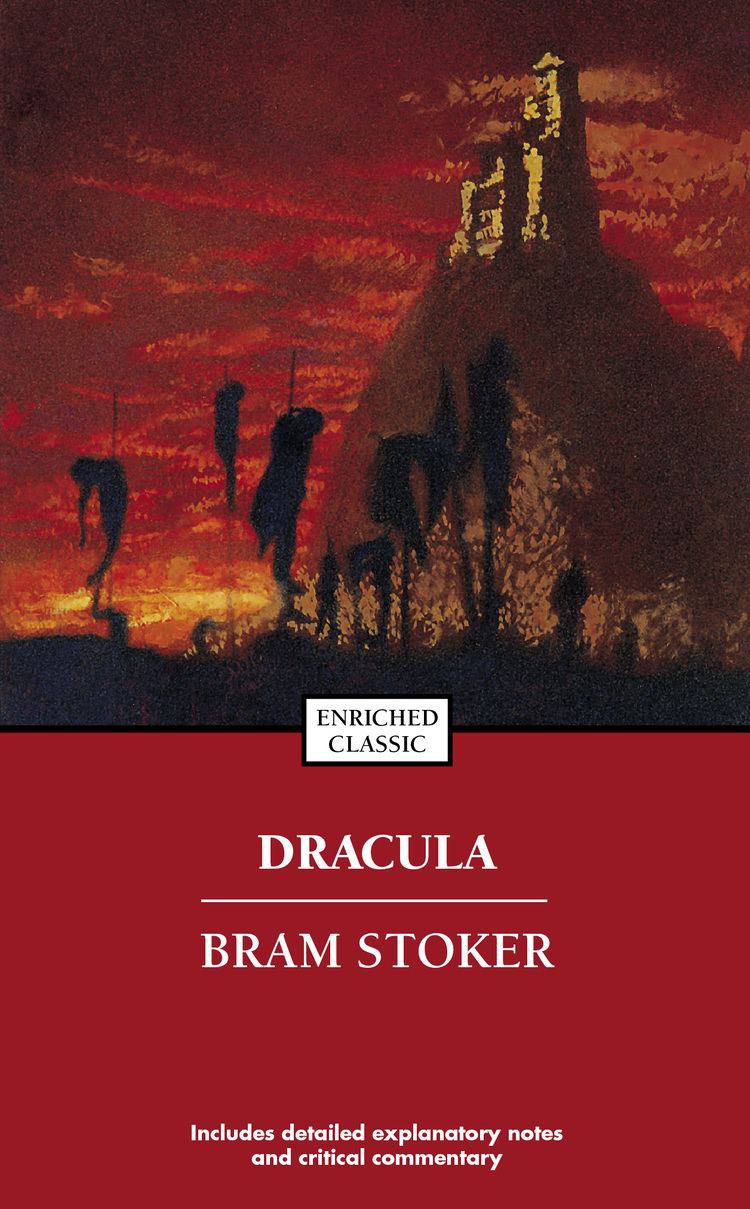
Plot summary
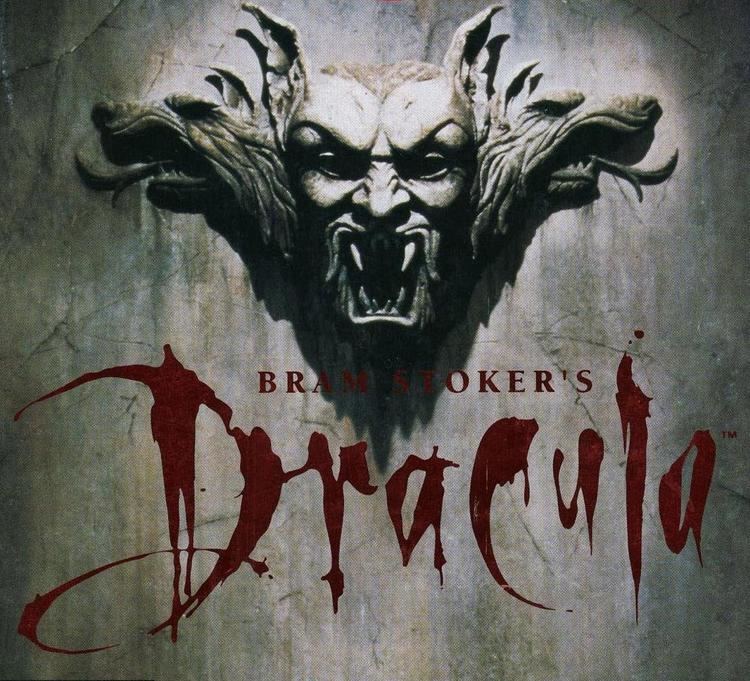
The story is told in epistolary format, as a series of letters, diary entries, newspaper articles, and ships' log entries, whose narrators are the novel's protagonists, and occasionally supplemented with newspaper clippings relating events not directly witnessed. The events portrayed in the novel take place chronologically and largely in England and Transylvania during the 1890s and all transpire within the same year between 3 May and 6 November. A short note is located at the end of the final chapter written 7 years after the events outlined in the novel.
 https:="" www.fernandovicente.es="" wp-content="" uploads="">
https:="" www.fernandovicente.es="" wp-content="" uploads="">The tale begins with Jonathan Harker, a newly qualified English solicitor, visiting Count Dracula in the Carpathian Mountains on the border of Transylvania, Bukovina, and Moldavia, to provide legal support for a real estate transaction overseen by Harker's employer, Mr Peter Hawkins of Exeter. At first enticed by Dracula's gracious manners, Harker soon realizes that he is Dracula's prisoner. Wandering the Count's castle against Dracula's admonition, Harker encounters three female vampires, called "the sisters", from whom he is rescued by Dracula. After the preparations are made, Dracula leaves Transylvania and abandons Harker to the sisters. Harker barely escapes from the castle with his life.
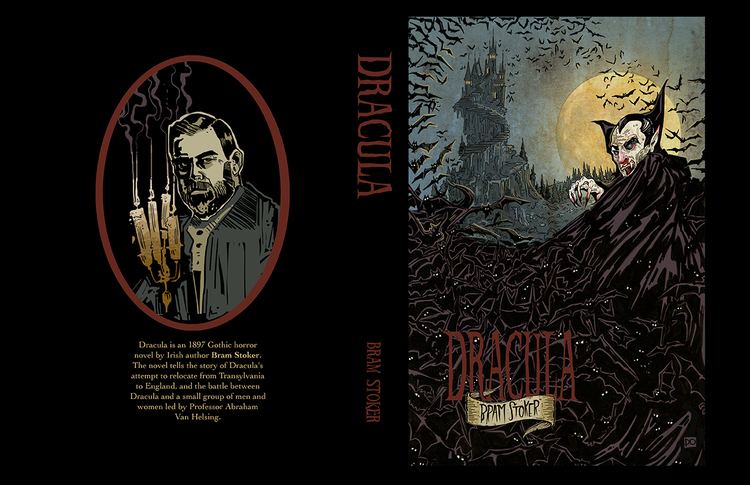
Dracula boards a Russian ship, the Demeter, taking along with him boxes of Transylvanian soil, which he required in order to regain his strength. Not long afterward, the ship having weighed anchor at Varna, runs aground on the shores of Whitby in the east coast of England. The captain's log narrates the gradual disappearance of the entire crew, until the captain alone remained, himself bound to the helm to maintain course. An animal resembling "a large dog" is seen leaping ashore. The ship's cargo is described as silver sand and 50 boxes of "mould", or earth, from Transylvania. It is later learned that Dracula successfully purchased multiple estates under the alias 'Count De Ville' throughout London and devised to distribute the 50 boxes to each of them utilizing transportation services as well as moving them himself. He does this to secure for himself "lairs" and the 50 boxes of earth would be used as his graves which would grant safety and rest during times of feeding and replenishing his strength.
Soon Dracula is indirectly shown to be stalking Lucy Westenra, who is holidaying in Whitby. As time passes she begins to suffer from episodes of sleepwalking and dementia, as witnessed by her friend Mina Murray, the fiancée of Jonathan Harker. Lucy receives three marriage proposals from Dr. John Seward, Quincey Morris, and Arthur Holmwood (the son of Lord Godalming who later obtains the title himself). Lucy accepts Holmwood's proposal while turning down Seward and Morris, but all remain friends. Dracula communicates with Seward's patient, Renfield, an insane man who wishes to consume insects, spiders, birds, and rats to absorb their "life force". Renfield is able to detect Dracula's presence and supplies clues accordingly.
When Lucy begins to waste away suspiciously, Seward invites his old teacher, Abraham Van Helsing, who immediately determines the true cause of Lucy's condition. He refuses to disclose it but diagnoses her with acute blood-loss. Helsing prescribes numerous blood transfusions to which Dr. Seward, Helsing, Quincey and Arthur all contribute over time. Helsing also prescribes flowers to be placed throughout her room and weaves a necklace of withered Garlic Blossoms for her to wear. However she continues to waste away - appearing to lose blood every night. While both doctors are absent, Lucy and her mother are attacked by a wolf and Mrs. Westenra, who has a heart condition, dies of fright. Van Helsing attempts to protect her with garlic but fate thwarts him each night, whether Lucy's mother removes the garlic from her room, or Lucy herself does so in her restless sleep. The doctors have found two small puncture marks about her neck, which Dr. Seward is at a loss to understand. After Lucy dies, Helsing places a golden crucifix over her mouth, ostensibly to delay or prevent Lucy's vampiric conversion. Fate conspires against him again when Helsing finds the crucifix in the possession of one of the servants who stole it off Lucy's corpse.
Following Lucy's death and burial, the newspapers report children being stalked in the night by a "bloofer lady" (i.e., "beautiful lady"). Van Helsing, knowing Lucy has become a vampire, confides in Seward, Lord Godalming, and Morris. The suitors and Van Helsing track her down and, after a confrontation with her, stake her heart, behead her, and fill her mouth with garlic. Around the same time, Jonathan Harker arrives from Budapest, where Mina marries him after his escape, and he and Mina join the campaign against Dracula.
The vampire hunters stay at Dr. Seward's residence, holding nightly meetings and providing reports based on each of their various tasks. Mina discovers that each of their journals and letters collectively contain clues to which they can track him down. She tasks herself with collecting them, researching newspaper clippings, fitting the most relevant entries into chronological order and typing out copies to distribute to each of the party which they are to study. Jonathan Harker tracks down the shipments of boxed graves and the estates which Dracula has purchased in order to store them. Van Helsing conducts research along with Dr. Seward to analyze the behaviour of their patient Renfield who they learn is directly influenced by Dracula. They also research historical events, folklore, and superstitions from various cultures to understand Dracula's powers and weaknesses. Van Helsing also establishes a criminal profile on Dracula in order to better understand his actions and predict his movements. Arthur Holmwood's fortune assists in funding the entire operation and expenses. As they discover the various properties Dracula had purchased, the male protagonists team up to raid each property and are several times confronted by Dracula. As they discover each of the boxed graves scattered throughout London, they pry them open to place and seal wafers of sacramental bread within. This act renders the boxes of earth completely useless to Dracula as he is unable to open, enter or further transport them.
After Dracula learns of the group's plot against him, he attacks Mina on three occasions, and feeds Mina his own blood to control her. This curses Mina with vampirism and changes her but does not completely turn her into a vampire. Van Helsing attempts to bless Mina through prayer and by placing a wafer of sacrament against her forehead, but it burns her upon contact leaving a wretched scar. Under this curse, Mina oscillates from consciousness to a semi-trance during which she perceives Dracula's surroundings and actions. Van Helsing is able to use hypnotism at the hour of dawn and put her into this trance to further track his movements. Mina, afraid of Dracula's link with her, urges the team not to tell her their plans out of fear that Dracula will be listening. After the protagonists discover and sterilize 49 boxes found throughout his lairs in London, they learn that Dracula has fled with the missing 50th box back to his castle in Transylvania. They pursue him under the guidance of Mina. They split up into teams once they reach Europe; Van Helsing and Mina team up to locate the castle of Dracula while the others attempt to ambush the boat Dracula is using to reach his home. Van Helsing raids the castle and destroys the vampire "sisters". Upon discovering Dracula being transported by Gypsies, the trio attack the caravan carrying Dracula in the 50th box of Earth. After dispatching many Gypsies who were sworn to protect the Count, Harker shears Dracula through the throat with a kukri, while the mortally wounded Quincey stabs the Count in the heart with a Bowie knife. Dracula crumbles to dust, and Mina is freed from her curse of vampirism, as the scar on her forehead disappears. Soon after, Quincey dies from his wounds.
The book closes with a note left by Jonathan Harker seven years after the events of the novel, detailing his married life with Mina and the birth of their son, whom they name after all four members of the party, but address as "Quincey". Quincey is depicted sitting on the knee of Van Helsing as they recount their adventure.
"Dracula's Guest"
The short story "Dracula's Guest" was posthumously published in 1914, two years after Stoker's death. It was, according to most contemporary critics, the deleted first (or second) chapter from the original manuscript and the one which gave the volume its name, but which the original publishers deemed unnecessary to the overall story.
"Dracula's Guest" follows an unnamed Englishman traveller as he wanders around Munich before leaving for Transylvania. It is Walpurgis Night and the young Englishman foolishly leaves his hotel, in spite of the coachman's warnings, and wanders through a dense forest alone. Along the way, he feels that he is being watched by a tall and thin stranger (possibly Count Dracula).
The short story climaxes in an old graveyard, where the Englishman, caught in a blizzard takes refuge in the marble tomb of "Countess Dolingen of Gratz". Within the tomb he sees the Countess - apparently asleep and healthy - but before he can investigate further, a mysterious force throws him clear of the tomb. A lightning bolt then strikes the tomb, destroying it and incinerating the undead screaming countess. The Englishman then loses consciousness. He awakens to find a "gigantic" wolf lying on his chest and licking at his throat; however, the wolf merely keeps him warm and protects him until help arrives.
When the Englishman is finally taken back to his hotel, a telegram awaits him from his expectant host Dracula, with a warning about "dangers from snow and wolves and night".
Deleted ending
A small section was removed from a draft of the final chapter, in which Dracula's castle falls apart as he dies, hiding the fact that vampires were ever there.
As we looked there came a terrible convulsion of the earth so that we seemed to rock to and fro and fell to our knees. At the same moment with a roar which seemed to shake the very heavens the whole castle and the rock and even the hill on which it stood seemed to rise into the air and scatter in fragments while a mighty cloud of black and yellow smoke volume on volume in rolling grandeur was shot upwards with inconceivable rapidity.
Then there was a stillness in nature as the echoes of that thunderous report seemed to come as with the hollow boom of a thunder-clap - the long reverberating roll which seems as though the floors of heaven shook. Then down in a mighty ruin falling whence they rose came the fragments that had been tossed skywards in the cataclysm.
Characters
Background
Between 1879 and 1898, Stoker was a business manager for the Lyceum Theatre in London, where he supplemented his income by writing a large number of sensational novels, his most successful being the vampire tale Dracula published on 26 May 1897. Parts of it are set around the town of Whitby, where he spent summer holidays.
Throughout the 1880s and 1890s, authors such as H. Rider Haggard, Rudyard Kipling, Robert Louis Stevenson, Arthur Conan Doyle, and H. G. Wells wrote many tales in which fantastic creatures threatened the British Empire. Invasion literature was at a peak, and Stoker's formula was very familiar by 1897 to readers of fantastic adventure stories, of an invasion of England by continental European influences. Victorian readers enjoyed Dracula as a good adventure story like many others, but it did not reach its legendary status until later in the 20th century when film versions began to appear.
Before writing Dracula, Stoker spent seven years researching European folklore and stories of vampires, being most influenced by Emily Gerard's 1885 essay "Transylvania Superstitions" which includes content about a vampire myth. Some historians are convinced that a historic figure, Vlad III Dracula, often called Vlad the Impaler, was the model for Stoker's Count although there is no supporting evidence. Stoker borrowed only "scraps of miscellaneous information", according to one expert, about this bloodthirsty tyrant of Wallachia and there are no comments about him in Stoker's working notes. Dracula scholar Elizabeth Miller has remarked that aside from the name and some mention of Romanian history, the background of Stoker's Count bears no resemblance to that of Vlad III Dracula.
Later he also claimed that he had a nightmare, caused by eating too much crab meat, about a "vampire king" rising from his grave.
Although a widely known vampire novel, Dracula was not the first. Johann Wolfgang von Goethe published The Bride of Corinth in 1797.(“From my grave to wander I am forc’d Still to seek The God’s long-sever’d link, Still to love the bridegroom I have lost, And the life-blood of his heart to drink;) Later Sheridan Le Fanu's 1871 Carmilla, about a lesbian vampire could have inspired Bram Stoker's Dracula, and Varney the Vampire, a lengthy penny dreadful serial from the mid-Victorian period by James Malcolm Rymer. John Polidori created the image of a vampire portrayed as an aristocratic man, like the character of Dracula, in his tale "The Vampyre" (1819). (He wrote Vampyre during a summer which he spent with Frankenstein creator Mary Shelley, her husband poet Percy Bysshe Shelley, and Lord Byron in 1816.)
The Lyceum Theatre where Stoker worked between 1878 and 1898 was headed by actor-manager Henry Irving, who was Stoker's real-life inspiration for Dracula's mannerisms and who Stoker hoped would play Dracula in a stage version. Irving never did agree to do a stage version, but Dracula's dramatic sweeping gestures and gentlemanly mannerisms drew their living embodiment from Irving.
The Dead Un-Dead was one of Stoker's original titles for Dracula, and the manuscript was entitled simply The Un-Dead up until a few weeks before publication. Stoker's notes for Dracula show that the name of the count was originally "Count Wampyr", but Stoker became intrigued by the name "Dracula" while doing research, after reading William Wilkinson's book An Account of the Principalities of Wallachia and Moldavia with Political Observations Relative to Them (London 1820), which he found in the Whitby Library and consulted a number of times during visits to Whitby in the 1890s. The name Dracula was the patronym (Drăculea) of the descendants of Vlad II of Wallachia, who took the name "Dracul" after being invested in the Order of the Dragon in 1431. In the Old Romanian language, the word dracul (Romanian drac "dragon" + -ul "the") meant "the dragon" and Dracula meant "son of the dragon". In the present day however, dracul means "the devil".
Publication
Dracula was published in London in May 1897 by Archibald Constable and Company. Costing six shillings, the novel was bound yellow cloth and titled in red letters. It was copyrighted in the United States in 1899 with the publication by Doubleday & McClure of New York. But when Universal Studios purchased the rights, it came to light that Bram Stoker had not complied with a portion of US copyright law, placing the novel into the public domain. In the United Kingdom and other countries following the Berne Convention on copyrights, the novel was under copyright until April 1962, fifty years after Stoker's death.
Reaction and scholarly criticism
Dracula was not an immediate bestseller when it was first published, although reviewers were unstinting in their praise. The contemporary Daily Mail ranked Stoker's powers above those of Mary Shelley and Edgar Allan Poe, as well as Emily Brontë's Wuthering Heights.
According to literary historians Nina Auerbach and David J. Skal in the Norton Critical Edition, the novel has become more significant for modern readers than it was for Victorian readers, most of whom enjoyed it just as a good adventure story. It reached its broad and iconic status only later in the 20th century when the movie versions appeared. A. Asbjørn Jøn has also noted that Dracula has had a significant impact on the image of the vampire in popular culture, folklore, and legend.
It did not make much money for Stoker. In the last year of his life, he was so poor that he had to petition for a compassionate grant from the Royal Literary Fund, and his widow was forced to sell his notes and outlines of the novel at a Sotheby's auction in 1913, where they were purchased for a little over £2. But then F. W. Murnau's unauthorized adaptation of the story was released in theatres in 1922 in the form of Nosferatu. Stoker's widow took affront and, during the legal battle that followed, the novel's popularity started to grow.
Nosferatu was followed by a highly successful stage adaptation, touring the UK for three years before arriving in the US where Stoker's creation caught Hollywood's attention and, after the American 1931 movie version was released, the book has never been out of print.
However, some Victorian fans were ahead of the time, describing it as "the sensation of the season" and "the most blood-curdling novel of the paralysed century". Sherlock Holmes author Sir Arthur Conan Doyle wrote to Stoker in a letter, "I write to tell you how very much I have enjoyed reading Dracula. I think it is the very best story of diablerie which I have read for many years." The Daily Mail review of 1 June 1897 proclaimed it a classic of Gothic horror, "In seeking a parallel to this weird, powerful, and horrorful story our mind reverts to such tales as The Mysteries of Udolpho, Frankenstein, The Fall of the House of Usher ... but Dracula is even more appalling in its gloomy fascination than any one of these."
Similarly good reviews appeared when the book was published in the U.S. in 1899. The first American edition was published by Doubleday & McClure in New York.
Scholarly criticism
In the last several decades, literary and cultural scholars have offered diverse analyses of Stoker's novel and the character of Count Dracula. C.F. Bentley reads Dracula as an embodiment of the Freudian id. Carol A. Senf reads the novel as a response to the powerful New Woman, while Christopher Craft sees Dracula as embodying latent homosexuality and sees the text as an example of a 'characteristic, if hyperbolic instance of Victorian anxiety over the potential fluidity of gender roles'. Stephen D. Arata interprets the events of the novel as anxiety over colonialism and racial mixing, and Talia Schaffer construes the novel as an indictment of Oscar Wilde. Franco Moretti reads Dracula as a figure of monopoly capitalism, though Hollis Robbins suggests that Dracula's inability to participate in social conventions and to forge business partnerships undermines his power. Richard Noll reads Dracula within the context of 19th century alienism (psychiatry) and asylum medicine. D. Bruno Starrs understands the novel to be a pro-Catholic pamphlet promoting proselytization.
Adaptations
The story of Dracula has been the basis for numerous films and plays. Stoker himself wrote the first theatrical adaptation, which was presented at the Lyceum Theatre on 18 May 1897 under the title Dracula, or The Undead shortly before the novel's publication and performed only once, in order to establish his own copyright for such adaptations. This adaption was first published only a century later in Oct 1997. The first motion picture to feature Dracula was Dracula's Death, produced in Hungary in 1921. The now-lost film, however, was not an adaptation of Stoker's novel, but featured an original story.
F. W. Murnau's unauthorised film adaptation Nosferatu was released in 1922, and the popularity of the novel increased considerably, owing to an attempt by Stoker's widow, who tried to have the film removed from public circulation. Prana Film, the production company, had been unable to obtain permission to adapt the story from Bram's widow Florence Stoker, so screenwriter Henrik Galeen was told to alter numerous details to avoid legal trouble. Galeen transplanted the action of the story from 1890s England to 1830s Germany and reworked several characters, dropping some (such as Lucy and all three of her suitors), and renaming others (Dracula became Orlok, Jonathan Harker became Thomas Hutter, Mina became Ellen, and so on). This attempt failed to avoid a court case, however; Florence Stoker sued Prana Film, and all copies of the film were ordered to be destroyed. However, the company was bankrupt, and Stoker only recovered her legal fees in damages. Some copies survived and found their way into theatres. Eventually, Florence Stoker gave up the fight against public displays of the film. Subsequent rereleases of the film have typically undone some of the changes, such as restoring the original character names (a practice also followed by Werner Herzog in his 1979 remake of Murnau's film Nosferatu the Vampyre).
Florence Stoker licensed the story to playwright Hamilton Deane, whose 1924 stage play adaptation toured England for several years before settling down in London. In 1927, American stage producer Horace Liveright hired John L. Balderston to revise Deane's script in advance of its American premiere. Balderston significantly compressed the story, most notably consolidating or removing several characters. The Deane play and its Balderston revisions introduced an expanded role and history for Renfield, who now replaced Jonathan Harker as Dracula's solicitor in the first part of the story; combined Mina Harker and Lucy Westenra into a single character (named Lucy); and omitted both Arthur Holmwood and Quincey Morris entirely. When the play premiered in New York, it was with Bela Lugosi in the title role, and with Edward van Sloan as Abraham Van Helsing, roles which both actors (as well as Herbert Bunston as Dr. Seward) reprised for the English-language version of the 1931 Universal Studios film production. The 1931 film was one of the most commercially successful adaptations of the story to date; it and the Deane/Balderston play that preceded it set the standard for film and television adaptations of the story, with the alterations to the novel becoming standard for later adaptations for decades to come. Universal Studios continued to feature the character of Dracula in many of their horror films from the 1930s and 1940s.
In 1958, British film company Hammer Film Productions followed the success of its The Curse of Frankenstein from the previous year with Dracula, released in the US as The Horror of Dracula, directed by Terence Fisher. Fisher's production featured Christopher Lee as Dracula and Peter Cushing as Van Helsing, but it diverged considerably from both the original novel and from the Deane/Balderston adaptation. It was an international hit for Hammer Film, however, and both Lee and Cushing reprised their roles multiple times over the next decade and a half, concluding with The Legend of the 7 Golden Vampires (with Cushing but not Lee) in 1974. Christopher Lee also took on the role of Dracula in Count Dracula, a 1970 Spanish-Italian-German coproduction notable for its adherence to the plot of the original novel. (For instance, it was the first film version of the story to include the character of Quincey Morris.) Playing the part of Renfield in that version was Klaus Kinski, who later played Dracula himself in 1979's Nosferatu the Vampyre.
In 1977, the BBC made Count Dracula, a 155-minute adaptation for television starring Louis Jourdan. Later film adaptations include John Badham's 1979 Dracula, starring Frank Langella and inspired by the 1977 Broadway revival of the Deane/Hamilton play, and Francis Ford Coppola's 1992 Bram Stoker's Dracula, starring Gary Oldman. The character of Count Dracula has remained popular over the years, and many films have used the character as a villain, while others have named him in their titles, including Dracula's Daughter and The Brides of Dracula. As of 2009, an estimated 217 films feature Dracula in a major role, a number second only to Sherlock Holmes (223 films). A large number of these appearances are not adaptations of Stoker's novel, but merely feature the character in an unrelated story.
